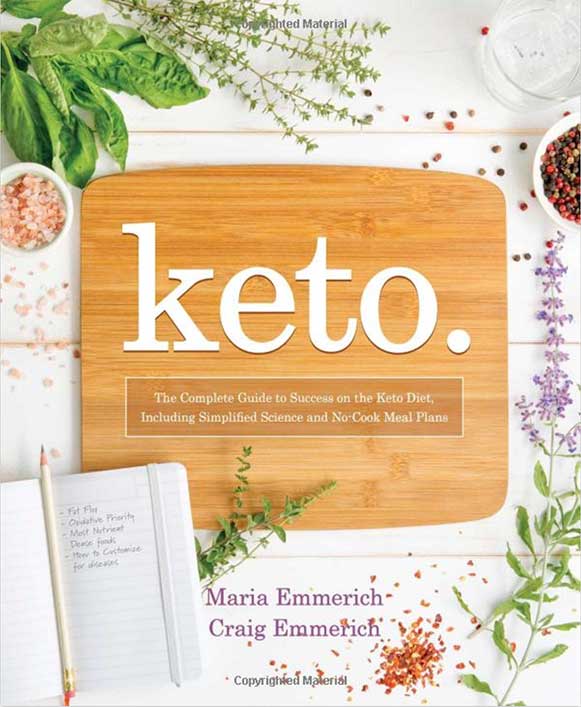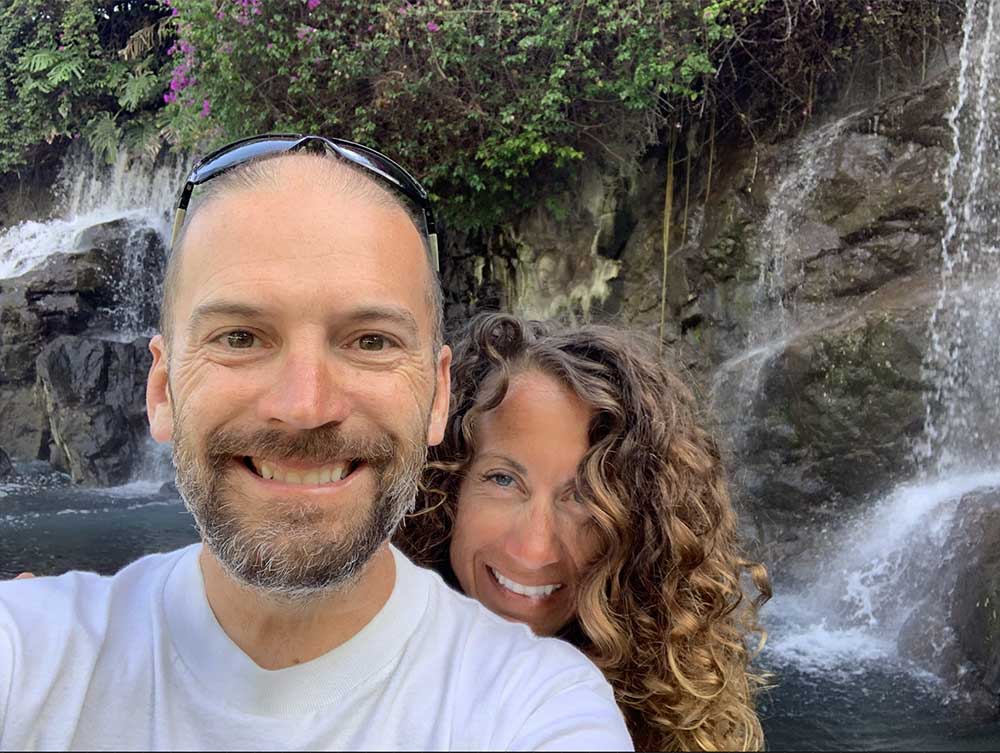Keto - The complete guide to success on the keto diet by Maria Emmerich - Book Excerpt



So many in the keto world misunderstand the biology and processes for why the body loses or stores fat. This understanding is so important to know what macros and foods will help with weight loss and which will hinder it. Even among keto foods.
This excerpt explains how our bodies process fuels (mainly fat) and the process known as fat flux. These are the two most basic biological processes for gaining and losing body fat. Understanding them, and then manipulating them can help you reach your goals.
So many push a high fat approach to keto when weight loss is the goal. But I always come back to this basic biology of "Where does the fat we eat go?". If you answer that question, you will no longer be eating high fat when weight loss is your goal. You will eat less dietary fat to force the body to burn more of its stored fat for fuel. These questions are what we answer in this book in detail with easy to understand biology and science.
Maria Emmerich is a nutritionist who specializes in the ketogenic diet and exercise physiology. She struggled with her health and weight throughout childhood which led her to become such a passionate nutrition expert. "My goal is to help transform people's lives and start living again!" Maria specializes in brain neurotransmitters and how food can increase mental wellness. Her expertise has sent her around the World speaking about ketogenic diets. She has also cooked with Halle Berry and writes for Halle's website. You can find her at KetoMaria.com.
She spends the majority of her time with clients around the World via Skype with amazing results. She specializes in helping autoimmune disorders, diabetes (Type 1 and Type 2), heart disease, cholesterol issues, alopecia, hashimoto's, cancer, epilepsy, seizures, depression and anxiety. You would be amazed at the amount of people get off medication with her guidance.
She is also an International Best Selling author of several books including "Quick and Easy Ketogenic Cooking" and "The 30 Day Ketogenic Cleanse". She also authored 10 other books including several cookbooks and 3 nutritional guide books including the best-selling book "Keto." Some of her readers include, Halle Berry, Valerie Bertinelli and Al Roker.

Craig Emmerich graduated in Electrical Engineering who has spent the last 15 plus years researching nutrition and working with thousands of clients along side his wife Maria Emmerich. He is an international best selling author of the "Keto: The Complete Guide" and "The Carnivore Cookbook". He uses his knowledge of how our bodies work to help clients heal and lose weight leveraging their biology to make it easy.
The FFA metabolism figure on page 50 shows the section of our metabolic pathways that represents lipolysis, which looks like a large spiral; this spiral represents fat flux.
There are two inputs into a fat cell:
The first input comes from the dietary carbohydrates that are stored in the fat cells when excess carbohydrates are converted into fat and stored; this process is called de novo lipogenesis. Many people think this is where most of their stored fat comes from. However, only about 5 percent of the stored fat comes from carbohydrates.8 When your carb intake is high, oxidative priority forces your body to store all the fat coming in with the carbs while your body is busy storing and burning those excess carbs. The second input is from unused fats (triglycerides) that are being put back into storage.
The one way fat leaves a fat cell is by lipolysis. Lipolysis allows fatty acids to enter the bloodstream and is the output of fat flux. Think of fat flux like a bucket with a tap and valve on the bottom. The two inputs (de novo lipogenesis and triglycerides) are like pouring water into the bucket, which causes the amount of water in the bucket to increase. If the valve at the bottom of the bucket is open-lipolysis in this example-some of that water exits, which reduces the total amount of water in the bucket. The inputs create fat gain, and the output (lipolysis) creates fat loss. To lose fat, your body needs to create a net outward flux, meaning your body needs to send more fat out than is going back into the fat cells.
During lipolysis, you have more fat from your fat stores in your bloodstream than your cells need at any given moment. This process is believed to be in preparation for a sudden burst of activity-say, running from a hungry lion. This additional fuel is available in case there is a sudden need for extra fuel. However, once this fuel (FFA) enters the bloodstream, there are two paths it can take:
- Used for fuel: It can be used for fuel in the muscles and other tissues.
- Sent back into storage: If it doesn't get used for fuel, it gets sent to the liver to be packaged back up into a triglyceride molecule (called esterification). This triglyceride is then packaged into a VLDL particle and sent back into fat storage. The following figure shows this process.9

The figure above doesn't show dietary fat, but the following figure shows the dietary fat part of the cycle.10

The process looks like this:
- Dietary fat is transported from your small intestine in chylomicrons (carriers that take dietary fats from the intestines to other body parts) to be used as fuel in tissue, but its primary destination is storage in your fat cells (adipose tissue).
- When insulin is low and your body needs fuel, the fat cell cleaves or strips the glycerol from the triglyceride, leaving three FFA molecules and one glycerol molecule.
- FFA leaving your fat cells stays as FFA and is bound to albumin to be transported in your blood to your muscles and other tissues as available fuel. This is one of the primary fuel sources for your body when energy isn't coming in through your diet.
- Whatever FFA isn't used as fuel makes its way to the liver where it is packaged (esterified) into a triglyceride molecule.
- From there, it is packaged into VLDL particles and sent back into circulation to be used as fuel in tissues or, more commonly, redeposited into fat cells.
There is a constant flux of fat in and out of the fat cells. Also, as described in Chapter 2, if the fat cells get overstuffed and inflamed, this fat flux breaks down because the overstuffed fat cells are resisting insulin. As more fat comes in through your diet or in VLDL particles from your liver, it can't be stored. Also, fat accumulates in the blood, liver, and pancreas, causing a metabolic breakdown. To lose fat and reverse metabolic damage, you need more fat to come out of the fat cells than is going in.
Maria and Craig Emmerich
Published June 25th, 2022
Website: KetoMaria.com
Social Media:
Twitter
Facebook
Maria and Craig Emmerich

Keto. The complete guide to success on the keto diet.
Maria Emmerich

Quick & Easy Ketogenic Cooking
Maria and Craig Emmerich

The Carnivore Cookbook
Maria Emmerich

30-Day Ketogenic Cleanse